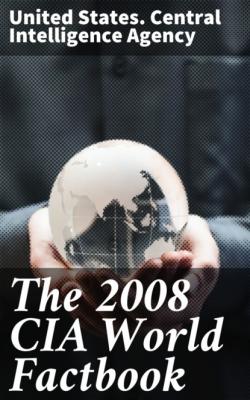The 2008 CIA World Factbook. United States. Central Intelligence Agency
Чтение книги онлайн.
Читать онлайн книгу The 2008 CIA World Factbook - United States. Central Intelligence Agency страница 77
 by Governor General Quentin BRYCE (since 5 September 2008) head of government: Prime Minister Kevin RUDD (since 3 December 2007); Deputy Prime Minister Julia GILLARD (since 3 December 2007) cabinet: prime minister nominates, from among members of Parliament, candidates who are subsequently sworn in by the governor general to serve as government ministers elections: the monarch is hereditary; governor general appointed by the monarch on the recommendation of the prime minister; following legislative elections, the leader of the majority party or leader of a majority coalition is sworn in as prime minister by the governor general
by Governor General Quentin BRYCE (since 5 September 2008) head of government: Prime Minister Kevin RUDD (since 3 December 2007); Deputy Prime Minister Julia GILLARD (since 3 December 2007) cabinet: prime minister nominates, from among members of Parliament, candidates who are subsequently sworn in by the governor general to serve as government ministers elections: the monarch is hereditary; governor general appointed by the monarch on the recommendation of the prime minister; following legislative elections, the leader of the majority party or leader of a majority coalition is sworn in as prime minister by the governor general
Legislative branch:
bicameral Federal Parliament consists of the Senate (76 seats; 12 members from each of the six states and 2 from each of the two mainland territories; one-half of state members are elected every three years by popular vote to serve six-year terms while all territory members are elected every three years) and the House of Representatives (150 seats; members elected by popular preferential vote to serve terms of up to three-years; no state can have fewer than 5 representatives) elections: Senate - last held 24 November 2007 (next to be held no later than 2010); House of Representatives - last held 24 November 2007 (next to be called no later than 2010) election results: Senate - percent of vote by party - NA; seats by party - Liberal Party-National Party coalition 37, Australian Labor Party 32, Australian Greens 5, Family First Party 1, other 1; House of Representatives - percent of vote by party - NA; seats by party - Australian Labor Party 83, Liberal Party 55, National Party 10, independents 2
Judicial branch:
High Court (the chief justice and six other justices are appointed by the governor general)
Political parties and leaders:
Australian Democrats [Lyn ALLISON]; Australian Greens [Bob BROWN];
Australian Labor Party [Kevin RUDD]; Country Liberal Party [Jodeen
CARNEY]; Family First Party [Steve FIELDING]; Liberal Party [Malcolm
TURNBULL]; The Nationals [Warren TRUSS]
Political pressure groups and leaders:
other: business groups; environmental groups; social groups; trade unions
International organization participation:
ADB, ANZUS, APEC, ARF, ASEAN (dialogue partner), Australia Group,
BIS, C, CP, EAS, EBRD, FAO, IAEA, IBRD, ICAO, ICC, ICCt, ICRM, IDA,
IEA, IFC, IFRCS, IHO, ILO, IMF, IMO, IMSO, Interpol, IOC, IOM, IPU,
ISO, ITSO, ITU, ITUC, MIGA, NAM (guest), NEA, NSG, OECD, OPCW, Paris
Club, PCA, PIF, SAARC (observer), Sparteca, SPC, UN, UNCTAD, UNESCO,
UNHCR, UNMIS, UNMIT, UNRWA, UNTSO, UNWTO, UPU, WCO, WFTU, WHO, WIPO,
WMO, WTO, ZC
Diplomatic representation in the US:
chief of mission: Ambassador Dennis J. RICHARDSON chancery: 1601 Massachusetts Avenue NW, Washington, DC 20036 telephone: [1] (202) 797–3000 FAX: [1] (202) 797–3168 consulate(s) general: Atlanta, Chicago, Honolulu, Los Angeles, New York, San Francisco
Diplomatic representation from the US:
chief of mission: Ambassador Robert D. McCALLUM, Jr. embassy: Moonah Place, Yarralumla, Canberra, Australian Capital Territory 2600 mailing address: APO AP 96549 telephone: [61] (02) 6214–5600 FAX: [61] (02) 6214–5970 consulate(s) general: Melbourne, Perth, Sydney
Flag description:
blue with the flag of the UK in the upper hoist-side quadrant and a large seven-pointed star in the lower hoist-side quadrant known as the Commonwealth or Federation Star, representing the federation of the colonies of Australia in 1901; the star depicts one point for each of the six original states and one representing all of Australia's internal and external territories; on the fly half is a representation of the Southern Cross constellation in white with one small five-pointed star and four larger, seven-pointed stars
Economy
Australia
Economy - overview:
Australia has an enviable, strong economy with a per capita GDP on par with the four dominant West European economies. Robust business and consumer confidence and high export prices for raw materials and agricultural products are fueling the economy, particularly in mining states. Australia's emphasis on reforms, low inflation, a housing market boom, and growing ties with China have been key factors behind the economy's 16 solid years of expansion. Drought, robust import demand, and a strong currency have pushed the trade deficit up in recent years, while infrastructure bottlenecks and a tight labor market are constraining growth in export volumes and stoking inflation. Australia's budget has been in surplus since 2002 due to strong revenue growth.
GDP (purchasing power parity):
$773 billion (2007 est.)
GDP (official exchange rate):
$908.8 billion (2007 est.)
GDP - real growth rate:
4.3% (2007 est.)
GDP - per capita (PPP):
$37,300 (2007 est.)
GDP - composition by sector:
agriculture: 3% industry: 26.4% services: 70.6% (2007 est.)
Labor force:
10.95 million (2007 est.)
Labor force - by occupation:
agriculture: 3.6% industry: 21.2% services: 75.2% (2004 est.)
Unemployment rate:
4.4% (2007 est.)
Population below poverty line:
NA%
Household income or consumption by percentage share:
lowest 10%: 2% highest 10%: 25.4% (1994)
Distribution of family income - Gini index:
30.5 (2006)
Investment (gross fixed):
27.3% of GDP (2007 est.)
Budget:
revenues: $321.9 billion expenditures: $315.8 billion (2007 est.)
Fiscal year:
1 July - 30 June
Public debt:
15.6% of GDP note: the Commonwealth government eliminated its net debt in 2006, but continues a gross debt issue to support the market for risk-free securities (2007 est.)
Inflation rate (consumer prices):
2.3%